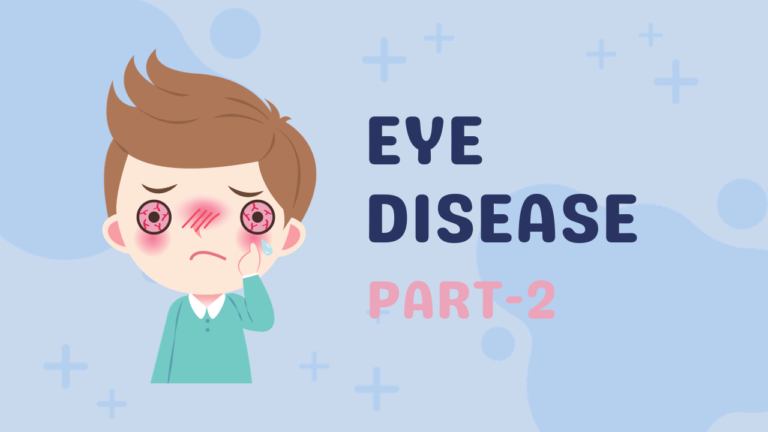Five elements to treat lifestyle diseases
Five elements to treat lifestyle diseases
Everything in nature is made up of five basic elements: earth, water, fire, air, and space. these are also called the “Pancha Mahabhoota.” Knowledge of these five elements helps us understand the laws of nature.
All the creation is made up of the five elements in different proportions. The Human body is also the product of these 5 elements in different proportions. 72% water, 12% earth, 6% air, 4% fire and the rest is Ether. Usually, the percentages of the first four elements remain constant but the percentage of Ether can be enhanced. Each element is responsible for different structures in the body. The source of chronic (self-manifested) diseases is the impurity of any of the elements or if the elements are out of balance with another element in the body.
HYPERTENSION (SILENT KILLER)
High blood pressure, also called hypertension, is blood pressure that is higher than normal. High Blood pressure is a force of blood pushing against the walls of blood vessels which is too high. Your blood pressure changes throughout the day based on your activities. Having blood pressure measures consistently above normal may result in a diagnosis of high blood pressure (or hypertension).
Systolic BP – Pressure in arteries when heart beats (120mmHg/16Kpa)
Diastolic BP – Pressure in arteries when heart rest between beats (80mmHg/11Kpa).
CLASSIFICATION OF BLOODPRESSURE | SYSTOLIC B.P
| DIASTOLIC B.P
|
NORMAL B.P | < 120mmHg | < 80mmHg |
PRE HYPERTENSION/ ELEVATED | 120-130mmHg
| < 80mmHg
|
HIGH BLOOD PRESSURE (STAGE 1) | 130-140mmHg
| 80-90mmHg
|
HIGH BLOOD PRESSURE (STAGE 2) | ≥ 140mmHg
| ≥ 90mmHg
|
ACCORDING TO 2010 NEW GUIDELINE BY AHA)
CAUSE (ACTUALLY UNKNOWN)
1. Narrowing of arteries of Renal: this condition involves narrowing of the arteries that supply blood in body leading to increased blood pressure.
2. Genetic: Genetic factors can play a significant role in hypertension. Individuals with a family history of high blood pressure are at a higher risk. There may be specific genetic variations that influence how the body regulates blood pressure.
3. Family History: Having a family history of hypertension is a risk factor. If your parents or siblings have had high blood pressure, your own risk may be increased.
4. Age: Blood vessels tend to lose elasticity and become stiffer as people age. Additionally, the risk of hypertension increases with age due to the cumulative effect of other risk factors and the natural aging process.
5. Alcohol Consumption: Drinking excessive amounts of alcohol can raise blood pressure. It’s important to moderate alcohol intake, as excessive consumption can contribute to hypertension and other health problems.
6. Salt: High salt (sodium) intake can lead to an increase in blood pressure. Salt retains water in the body, which increases the volume of blood in the arteries, putting more pressure on the artery walls.
7. Wrong Dietary Habits: Poor dietary habits, including a diet high in saturated and trans fats, cholesterol, and processed foods, can contribute to obesity and high blood pressure.
8. Metabolic Disorder: Certain metabolic disorders, such as diabetes and obesity, can contribute to hypertension. Insulin resistance, a common feature of metabolic syndrome, may play a role in elevating blood pressure.
Naturopathy treatment
1. Prithvi tatva :
-Mud application
–Enima/ hot and cold foot
2. Bath: jal tatva
3. Pranayam : vayu tatva
4. Surya snan : agni tatva
5. Diet/fasting : aakash tatva
Herbs and treatment
1. garlic
2. ginger
3. trifala
4. arjun
5. sarpagandha
DIABETES MELLITUS
(it is a metabolic disorder)
According to the American Diabetes Association, diabetes mellitus is defined as a condition characterized by high levels of glucose in the blood due to a defect in insulin secretion, insulin action, or both. Insulin, produced by the pancreas, is a hormone that regulates blood sugar. In individuals with diabetes, the body either doesn’t produce enough insulin or cannot effectively use the insulin it produces, leading to elevated blood glucose levels. Diabetes is a chronic condition that requires careful management to prevent complications.
Types of diabetes:-
1. Type 1 – IDDM or Juvenile DM: Type 1 diabetes, also known as Insulin-Dependent Diabetes Mellitus (IDDM) or Juvenile Diabetes Mellitus, is typically diagnosed in childhood or adolescence. It results from the immune system attacking and destroying the insulin-producing beta cells in the pancreas. Individuals with type 1 diabetes require insulin therapy for managing blood sugar levels.
2. Type 2 – NIDDM or Maturity-onset DM: Type 2 diabetes, also known as Non-Insulin-Dependent Diabetes Mellitus (NIDDM) or Maturity-Onset Diabetes, is more common in adults. In type 2 diabetes, the body either doesn’t produce enough insulin or becomes resistant to its effects. Lifestyle factors, such as poor diet and lack of exercise, are often associated with its development. Management may involve lifestyle changes, oral medications, or insulin, depending on the severity.
3. Type 3 – DM associated with other conditions: This category may include diabetes that is associated with other medical conditions or factors. For example, diabetes can be a secondary condition in certain diseases or situations.
4.Type 4 – Gestational DM (GDM): Gestational Diabetes Mellitus occurs during pregnancy. It is characterized by elevated blood sugar levels and is usually temporary. However, women who have had gestational diabetes are at an increased risk of developing type 2 diabetes later in life.
Causes:-
1. Genetics: Genetic factors can contribute to an individual’s susceptibility to diabetes. A family history of diabetes increases the likelihood of developing the condition. Specific genetic variations may influence insulin production, insulin sensitivity, and other factors related to glucose metabolism.
2. Environmental Factors: Various environmental factors, including exposure to certain viruses, toxins, and early-life influences, may contribute to the development of diabetes.
3. Obesity: Excess body weight, especially abdominal obesity, is a significant risk factor for diabetes.
4. Lifestyle: Unhealthy lifestyle choices, including poor dietary habits and sedentary behavior, are major contributors to the rising prevalence of diabetes. Diets high in processed foods, sugary beverages, and saturated fats can contribute to weight gain and insulin resistance.
5. Hypertension: Hypertension, or high blood pressure, is a common comorbidity of diabetes. Elevated blood pressure can contribute to cardiovascular complications and worsen the progression of diabetes-related complications.
6. Stress: Chronic stress can impact blood sugar levels by triggering the release of stress hormones like cortisol and adrenaline. Over time, persistent stress can contribute to insulin resistance.
7. Lack of Rest: Inadequate sleep and rest can disrupt the body’s hormonal balance, affecting insulin sensitivity and glucose metabolism. Sleep deprivation may contribute to insulin resistance and an increased risk of diabetes.
Symptoms of diabetes: –
1. Increase in thirst
2. Frequent urination
3. Sudden weight loss
4. Fatigue & Weakness
5. Poor wound healing
6. Burning or tingling sensation in feet & hand
Naturopathy treatment
1. Mud therapy and diet: –Prithvi tatva
2. gh pack on stomach: – jal tatva
3. vajrasan/mandukasan/halasan :- vayu tatva
4. Surya snan :- agni tatva
5. Diet/fasting: – aakash tatva
Herbs: –
1. Methidana
2. Amla
3. Alovera
4. Giloy
5. Madhunasini
6. Haldi
7. Jambu
HIGH CHOLESTEROL & TRIGLYCERIDES
High Cholesterol:
High cholesterol, or hypercholesterolemia, is a condition where there are elevated levels of cholesterol in the blood. Cholesterol is a fatty substance that is essential for building cells and producing certain hormones. However, too much cholesterol in the blood can lead to the formation of plaques in arteries, increasing the risk of heart disease and stroke. cholesterol is produced in stomach with the help of enzymes of body, it’s a type of fat
LDL (low-density lipoprotein) – deposits in arteries & disturbs blood supply
HDL (high-density lipoprotein) – cell wall creates, helps to maintain organs
High Triglycerides:
High triglycerides is a condition characterized by elevated levels of triglycerides in the blood. Triglycerides are a type of fat that the body uses for energy. Elevated triglyceride levels are often associated with poor diet, obesity, sedentary lifestyle, and can contribute to the development of cardiovascular diseases.
It comes from the food we eat; simple carbohydrates convert in Triglycerides (Butter, ghee, oil, maida and fried food)
Causes:-
1. Lifestyle: Sedentary lifestyles and lack of physical activity can contribute to high cholesterol levels. Regular exercise helps increase HDL (high-density lipoprotein) cholesterol, which is beneficial, and can help manage overall cholesterol levels.
2. Wrong Food Habits: –Consuming a diet high in saturated and trans fats, as well as cholesterol-rich foods, can contribute to elevated cholesterol levels. These dietary choices can lead to an increase in LDL (low-density lipoprotein) cholesterol, often referred to as “bad” cholesterol.
3. Lack of Exercise: –Physical activity is important for maintaining a healthy balance of cholesterol. Lack of exercise can contribute to weight gain, which in turn may lead to higher levels of LDL cholesterol and lower levels of HDL cholesterol.
4. Indigestion: –Poor digestion and absorption of nutrients, including fats, can impact cholesterol levels. Conditions affecting the digestive system may lead to imbalances in cholesterol metabolism.
5. Obesity: Being overweight or obese is a significant risk factor for high cholesterol. Excess body weight, especially abdominal fat, can contribute to higher levels of LDL cholesterol and lower levels of HDL cholesterol.
6. Alcohol: – Excessive alcohol intake can lead to higher levels of triglycerides, a type of fat, in the blood. It’s important to consume alcohol in moderation to maintain heart health.
7. Stress: –Chronic stress can influence cholesterol levels through various mechanisms. Stress may lead to unhealthy lifestyle choices, such as poor dietary habits and lack of exercise.
Symptoms:-
Feeling lethargic
Drowsiness
Breathlessness
Weakness
Fatigue
Palpitation
Giddiness
Naturopathy treatment
1. food and diet: prithvi tatva
2. lapet on neck and chest: jal tatva
3. mudra: apan vayu / vajrasan/ kapalbhati: vayu tatva
4. surya namaskaar: agni tatva
5. fasting: aakash tatva
Herbs used for treatment
1. wheatgrass
2. alfalfa
3. aloe vera
4. garlic
5. cinnamon
6. amla
7. fresh coriander
8. curry leaves
9. tulsi
10. haldi
11. ashgourd
12. Arjun chaal








